A sudden cloudburst turned Ramban’s lifeline into a deathtrap. As hills crumbled, so did public faith in the system.
By Tauheed Ahmad
In the dead of night, Ramban was jolted awake by fury from the skies. A cloudburst at 3:30 AM on April 20 turned the serene Seri-Bagna stretch into a disaster zone — killing at least three, severing the vital Jammu-Srinagar highway, and leaving hundreds stranded. Roads vanished under rubble, trucks plunged into gorges, and cries for help echoed through the rain-soaked hills. While rescue teams race against time, questions now rain harder than the storm: Was this just nature’s wrath — or a tragedy long foretold, rooted in negligence, flawed development, and warnings that were never heeded?
Ramban – At least three people lost their lives and hundreds were left stranded after a powerful cloudburst struck Jammu and Kashmir’s Ramban district early Sunday morning on 20th April 2025. The natural disaster, which occurred around 3:30 AM in the Seri-Bagna area, triggered flash floods and massive landslides, causing extensive damage to property, vehicles, and a vital stretch of the Srinagar-Jammu National Highway.
District authorities confirmed the fatalities and stated that rescue and relief operations were immediately launched in the affected areas. Deputy Commissioner Ramban, Baseer-ul-Haq, said the continuous overnight rain led to landslides and flash floods that destroyed several structures and swept away vehicles along the highway. “Men and machinery have been pressed into service since last night,” he said, adding that road connectivity has been completely disrupted due to the destruction.
Visuals from the scene show the sheer force of the disaster. In some locations, signboards are barely visible above piles of mud and stones, indicating the depth of the debris. The stretch between Kelamorh and Monkey Morh appears entirely buried under landslide rubble, prompting fears that it may take weeks to clear.
A driver at the scene recounted the terrifying moment: “We were asleep when the cloudburst hit around 3:30 AM. Within minutes, everything was underwater or buried.” Another said, “I was stuck, and the truck tilted. I jumped out to save my life. The vehicle rolled down into the gorge.”
While some people praised the administration’s prompt response, others expressed frustration and anger over what they described as negligence. “Not a single official came to our help in time,” alleged a truck driver stranded near Seeri, where oil tankers and heavy vehicles are still stuck under tons of debris. “The road was recently built and now it’s completely gone. What kind of construction is this?”
Several stranded tourists and drivers said they feared people might still be trapped under the rubble. Locals could be seen helping each other and attempting to tow their vehicles from dangerous positions. “Even towing isn’t working. We need cranes or excavators. These trucks are our only livelihood – if they fall, we’re finished,” said another anxious driver. In some cases, trucks are perched perilously close to the edge of the highway, with steep drops just inches away.
“Some drivers stuck at the site broke down in tears. One of them was seen crying and beating his forehead in distress, saying, ‘No one even came to check if we were dead or alive.’ His words echoed the fear and helplessness faced by many stranded on the devastated highway.”
Despite numerous efforts by both the state and central governments to improve the highway’s safety and accessibility, including the construction of a four-lane road and the addition of more tunnels, the Jammu-Srinagar National Highway continues to be a difficult and dangerous route. The terrain remains treacherous, and the region’s frequent landslides, mudslides, and extreme weather conditions continue to pose significant challenges to road safety.
Bilal, a frequent traveler on this highway, shared his experience, saying, “Every year, we hear about accidents and lives lost on this road. It’s not just the road itself, but the weather, the landslides—it’s always a gamble.”
Another driver expressed the anxiety he feels every time he sets off, saying, “In the rainy season, I think a hundred times before taking off on this road. It gives nightmares, particularly when you cross the Ramban to Banihal stretch.”
Despite the construction of tunnels and road widening projects, Bilal added, “Even with the four-lane expansion, the highway remains a nightmare during the rains. No amount of construction can completely eliminate the dangers posed by nature here.” Even with significant infrastructure upgrades, the highway remains vulnerable to natural disasters, highlighting the complex and persistent issues faced in making the route safer for commuters.
Despite heavy rainfall continuing in parts of the district, the administration has intensified rescue efforts and is assessing the extent of the damage. Police, SDRF, and civil defence teams are at work, while over 100 villagers were rescued earlier in the day from flash-flood-hit Dharam Kund village. Around 40 residential houses were reportedly damaged, and several vehicles swept away by an overflowing stream.
In response to the cloudburst and heavy rains in Ramban, the Indian Army also launched coordinated relief operations along NH-44. Quick Reaction Teams from Banihal, Chanderkote, and nearby areas provided hot meals, medical aid, and shelter to stranded commuters. Though no formal requisition was made, the Army worked closely with civil authorities including the DC and SSP Ramban. Eight Army columns remain on standby. Road clearance continues with support from firms like KRCL and CPPL. A stranded commuter summed up public sentiment: “There’s no worry—the Army is here.” The Army reiterated its commitment to stand by the people in crisis.
But as the floodwaters recede, the real questions begin to rise — questions not just about nature, but about negligence. Many believe the tragedy in Ramban was not merely a natural disaster, but a catastrophe built on years of poor planning and ignored warnings.
As reported by Kashmir News Service (KNS), senior Aam Aadmi Party (AAP) leader Safeer Choudhary, while addressing a press conference in Jammu, blamed “years of criminal negligence” for setting the stage for the disaster. “Ramban has been looted in the name of development. This is not just a natural accident, it is the result of unchecked corruption and administrative apathy. We demand justice, not mere sympathy,” Choudhary said.
The cloudburst wiped out entire villages, submerged roads, and left the National Highway — considered the region’s lifeline — in ruins. Critics argue that the scale of the damage points to deep-rooted governance failures. Environmentalists and local communities have long warned about unplanned development in the region, citing deforestation, unsafe tunneling, and ignored ecological assessments. According to Choudhary, these warnings were repeatedly dismissed.
“Why were large infrastructure projects approved without proper slope stability or drainage designs? Why were early warning systems not installed, despite repeated disasters in the past? And why has the National Highway project been sublet multiple times, compromising its safety?” he questioned.
NGT Warned of Environmental Damage in NH-44 Project
The ongoing four-laning of National Highway 44 between Udhampur and Banihal had come under severe criticism from the National Green Tribunal (NGT), which, in a strongly-worded order dated June 28, 2021, warned that the project could be halted if the National Highways Authority of India (NHAI) failed to prevent further environmental degradation.
As reported by *Down To Earth* on July 1, 2021, the tribunal expressed disappointment that “nothing tangible had been done” over four years to control the illegal and unscientific dumping of construction debris into the Chenab river and nearby water bodies.
“While construction of roads is a necessity, it cannot be at the cost of environment,” the NGT observed. “The principle of sustainable development cannot be avoided. If protection of environment cannot be ensured, the project may have to be halted to prevent damage…”
The order was Issued by a bench led by NGT Chairperson Justice Adarsh Kumar Goel, alongside Justices Sudhir Agarwal, M Sathyanarayanan and Brijesh Sethi.
The tribunal noted that muck was being dumped illegally at both designated and non-
designated sites, including forest areas like Nashri and riverside zones in Chanderkote. A pollution report submitted by the Jammu and Kashmir Pollution Control Board (JKPCB) on July 31, 2020, had flagged that most dumping sites had exceeded capacity and lacked proper containment structures. Gabion walls constructed at some sites were declared “inadequate to meet the desired purpose.”
The report also pointed to serious risks for the Salal Hydro Electric Power Project due to silting, warning of “disastrous consequences in terms of power generation.” The Irrigation and Flood Control Department had similarly cautioned that such dumping could lead to flooding downstream.
In a striking incident noted in the report, police in Ramban district had arrested a site engineer and four operators of a contractor for directly dumping muck into the Chenab at Morh Gohri in July 2020, violating district administration orders. Machinery including two excavators and a JCB loader was seized.
Despite repeated directions since 2018, the NHAI and its contractors failed to comply. In 2019, the tribunal had imposed interim compensation and directed performance guarantees amounting to several crores. Yet, by 2020, violations had continued unabated.
The NGT directed the JKPCB to initiate prosecution against the violators and sought compliance reports within two months. It also summoned the Managing Director of NHAI and Chairman of JKPCB to appear via video conferencing with their action-taken reports on October 6, 2021.
The case, originally filed In 2016 by a resident affected by the project, continues to serve as a key example of the tension between infrastructure development and environmental safeguards.
Lieutenant Governor Manoj Sinha has expressed grief over the loss of lives due to flash floods triggered by incessant rain in Ramban. “Deeply anguished by the tragic loss of precious lives due to the flash floods triggered by incessant rain in Ramban. My heartfelt condolences to the bereaved families in this hour of grief. District administration, SDRF, rescue teams are on the job to ensure swift rescue and relief. All possible assistance is being extended to the affected families,” the Lieutenant Governor said.
Chief Minister Omar Abdullah also expressed his sorrow over the tragedy, stating, “Extremely anguished by the tragic landslide and flash flood in Ramban, which have caused considerable damage to life and property. My thoughts are with the affected families in this difficult hour. We are in touch with the local administration to ensure immediate rescue efforts wherever needed. Later today, I will be reviewing restoration, relief, and repair plans. For now, the focus remains on managing the situation on the ground. Citizens are advised to follow travel advisories and avoid non-essential movement in vulnerable areas.”
The Jammu-Srinagar highway remains closed from both ends, with landslides, mudslides, and shooting stones reported at multiple points between Nashri and Banihal. A traffic department spokesperson advised commuters to avoid travel until further notice.
Meanwhile, the Inspector General of Police (IGP) Traffic, J&K, issued an update on X (formerly Twitter), stating that vehicular movement on the Jammu-Srinagar National Highway (NH-44) will remain suspended on Monday. “Incessant rains hampered the restoration work on Jammu Srinagar NHW. Tomorrow vehicular movement will remain suspended… People are advised not to undertake journey on NHW between Nashri and NAVYUG Tunnel till the restoration work is completed and the surface is traffic worthy,” the statement read.
Blurb
“Some drivers stuck at the site broke down in tears. One of them was seen crying and beating his forehead in distress, saying, ‘No one even came to check if we were dead or alive.’ His words echoed the fear and helplessness faced by many stranded on the devastated highway.”
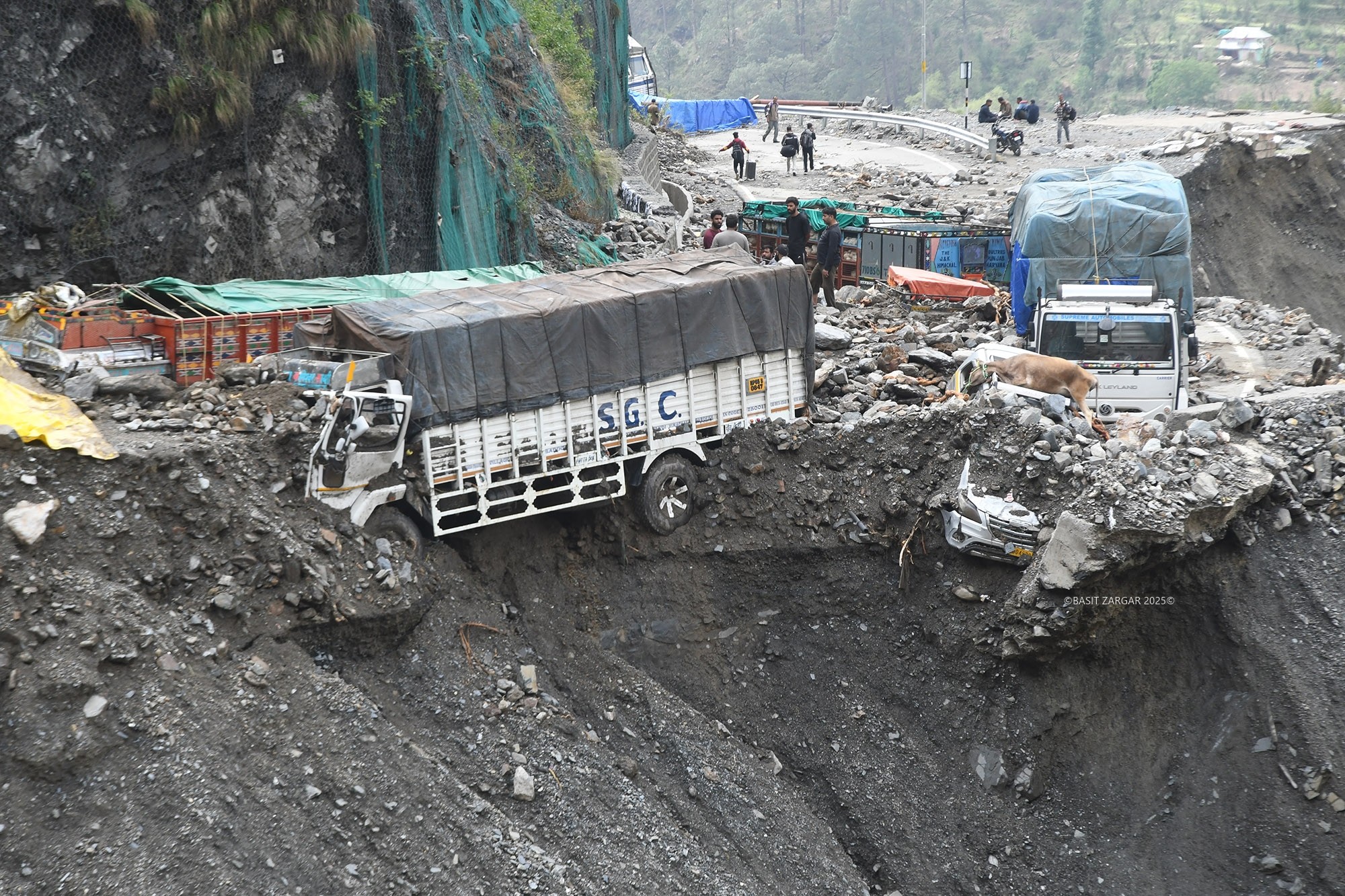
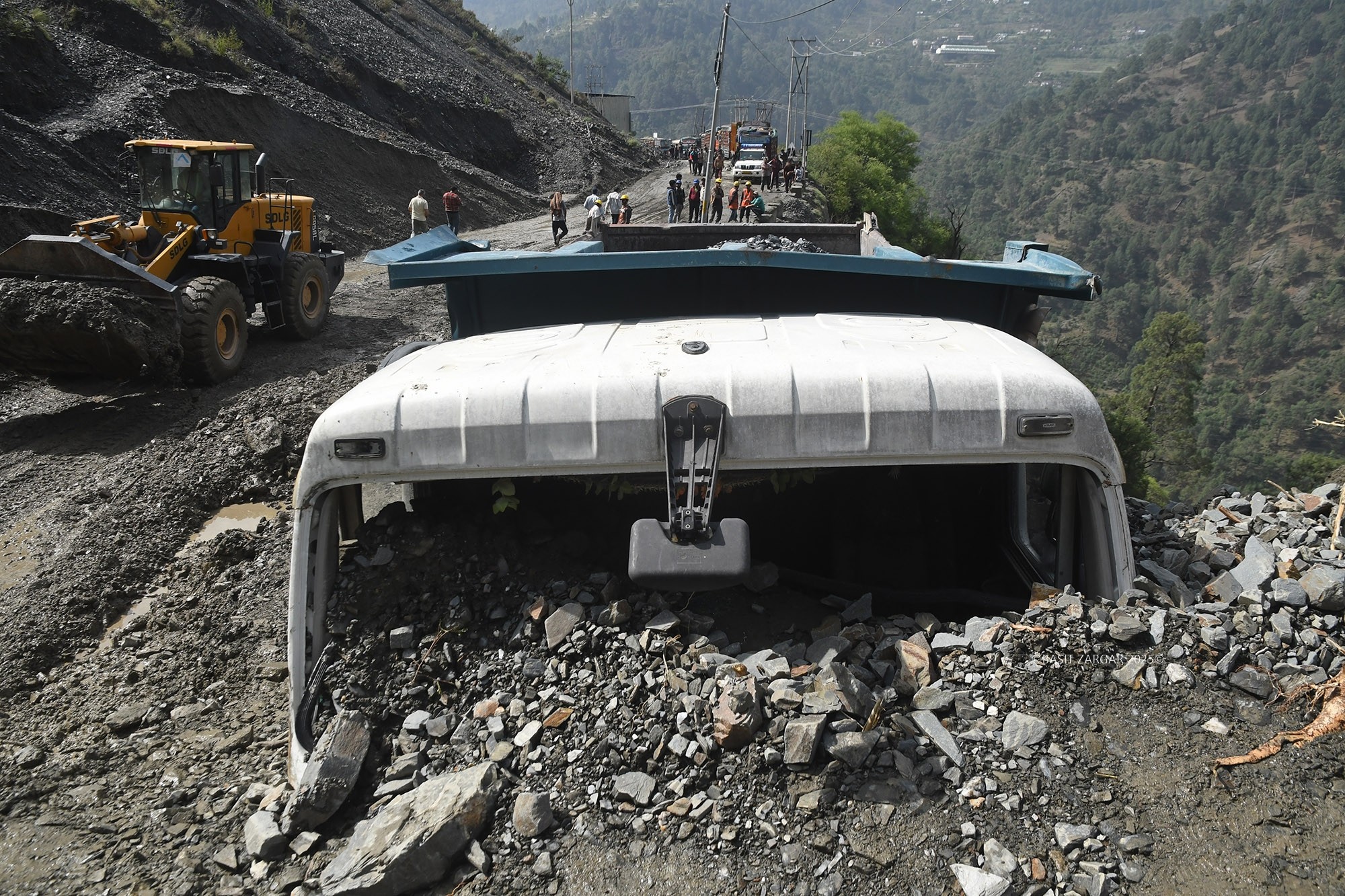
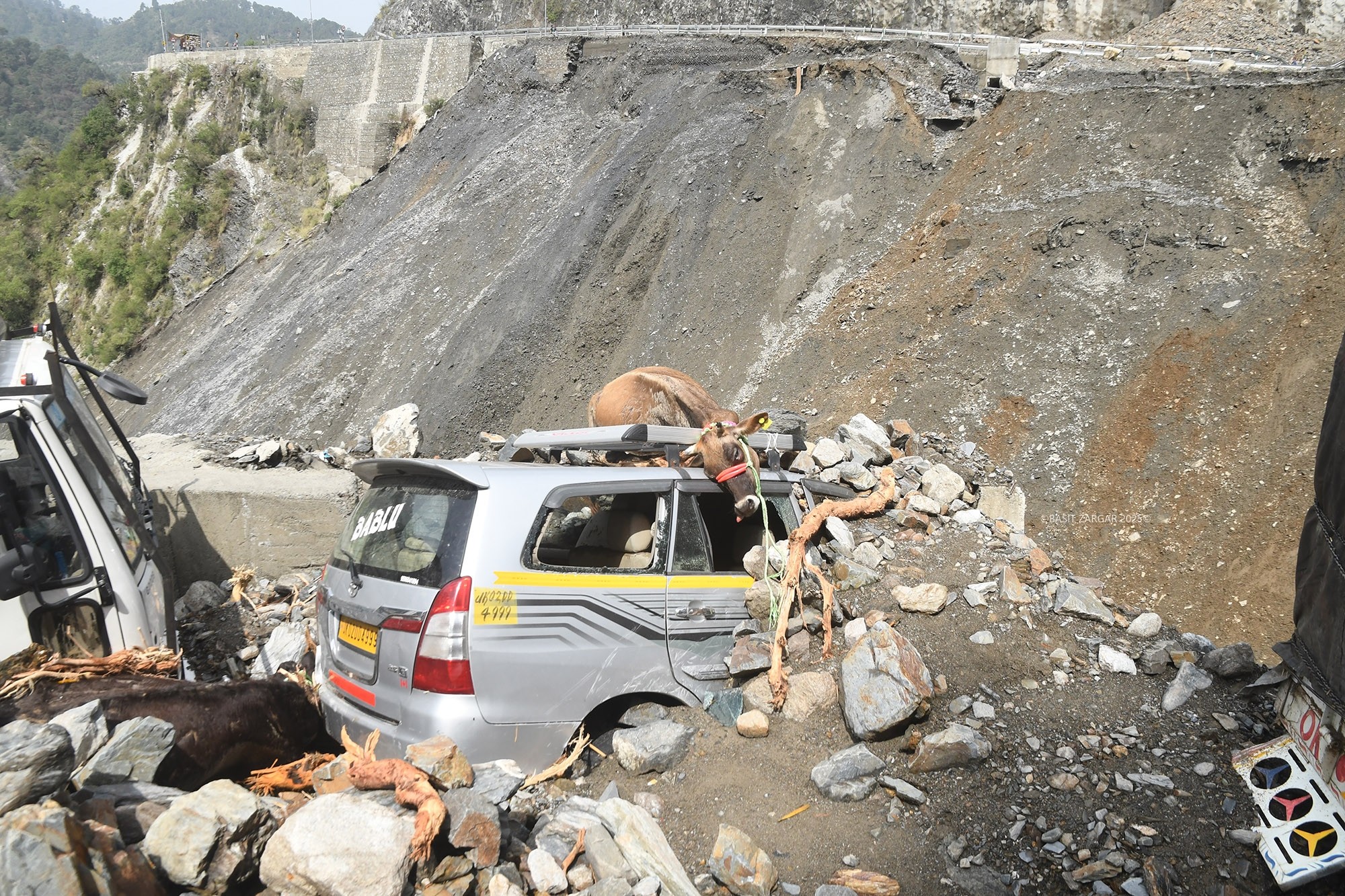
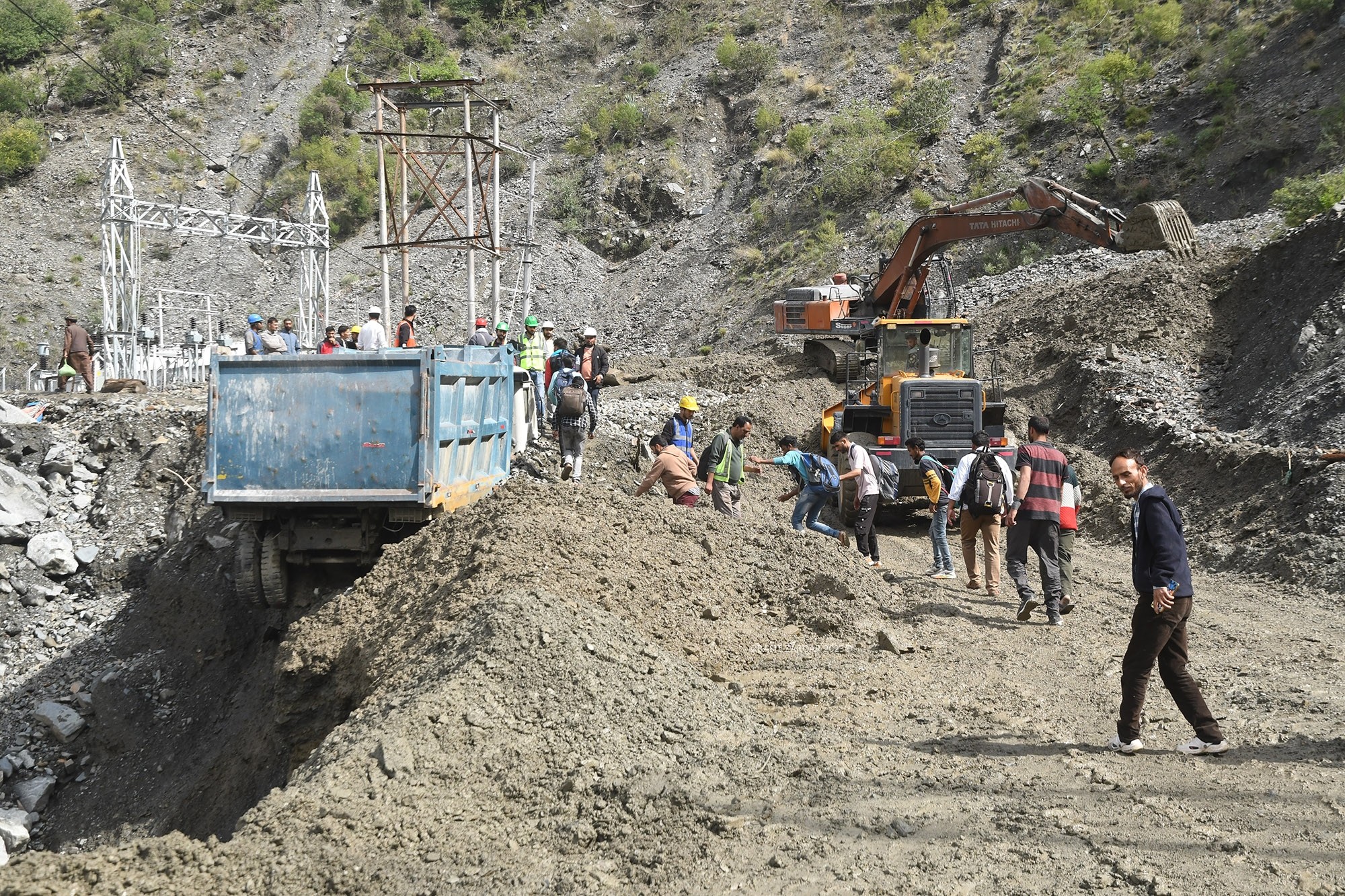
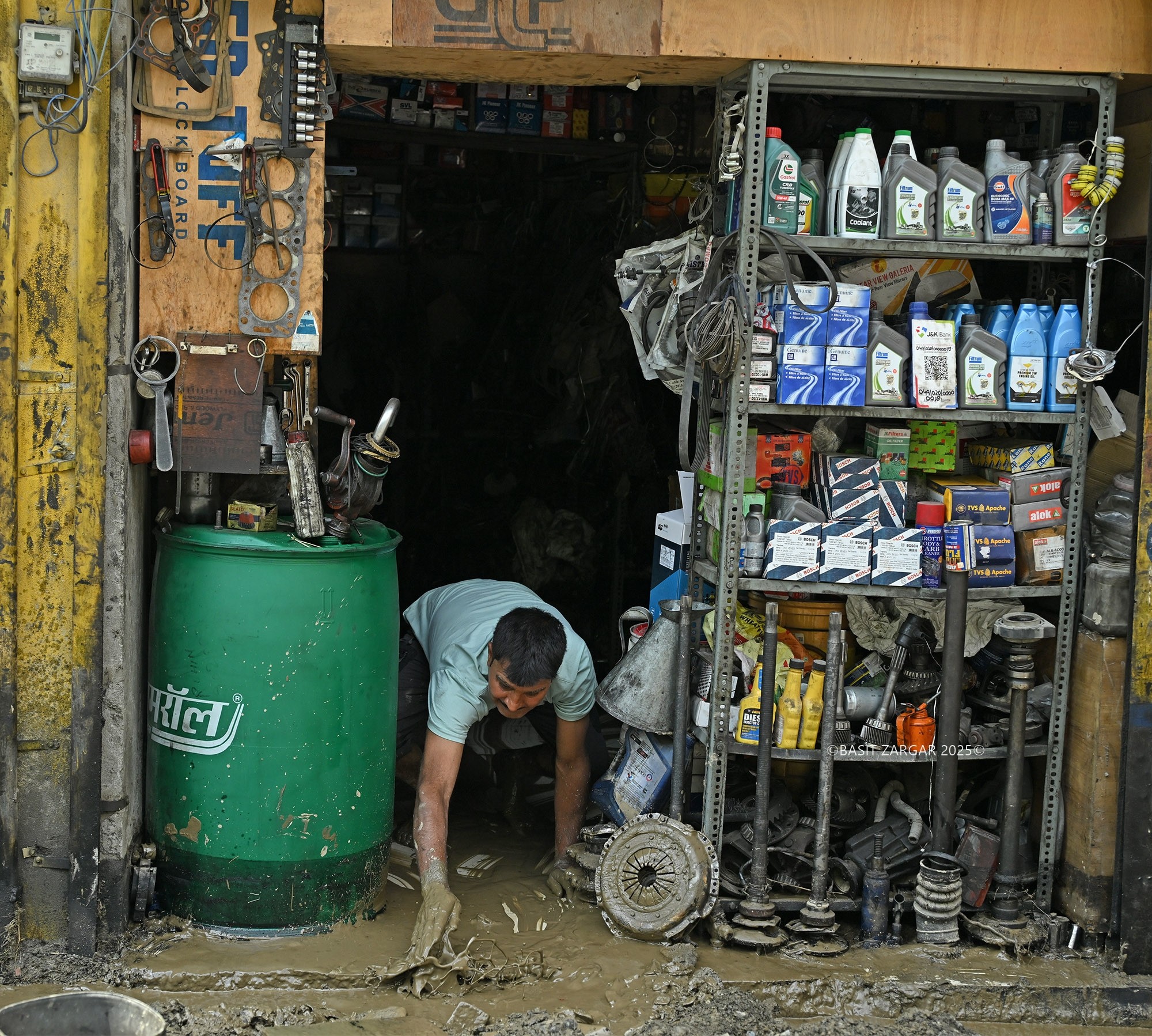
Leave a Reply